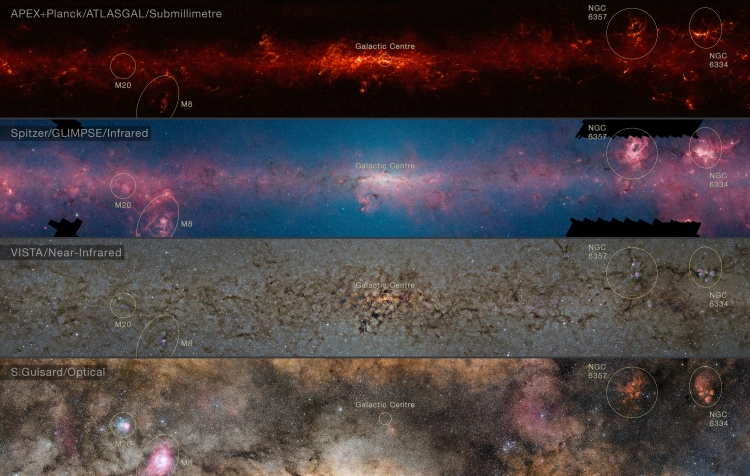The Milky Way was studied in the submillimeter range. ATLASGAL project completed

Astronomers have published on the web a photograph of our Galaxy, which was obtained using the APEX radio telescope as part of the ATLASGAL (APEX Telescope Large Area Survey of the Galaxy) project. This telescope operates at an altitude of 5,100 meters above sea level in the Atacama Desert, Chile.
Thanks to the special climatic conditions and terrain landscape, scientists were able to obtain a detailed image of the distribution of cold and dense gas in the Milky Way. Also, astronomers have calculated the total mass of dust in the part of the Galaxy available for observation in the southern hemisphere of our planet.
')
In addition, experts have posted and other images of the Milky Way, obtained in different wavelength ranges. Such images show objects of various types, from brightly shining stars in the visible spectrum to nebulae, which are visible only in the near-infrared range.
“ATLASGAL provided us with an excellent opportunity to see where the star formation center of massive stars and next-generation star clusters is located. Using this data and combining it with the information of the Planck space mission, we have the opportunity to find a link between the star formation and the structure of giant molecular clouds, ”said representative of the ATLASGAL project team Leonardno Testi.


APEX performed the first complete mapping of the entire Galaxy plane, visible from the southern hemisphere of the Earth, on submillimeter waves. The detailing of images is higher than that of images obtained by spacecraft.
The Milky Way maps cover sector 140 by 3 degrees, which is about four times higher than the size of the first work on the ATLASGAL project. The cards have a higher quality, since some areas are re-examined.
Source: https://habr.com/ru/post/390855/
All Articles